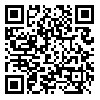BibTeX | RIS | EndNote | Medlars | ProCite | Reference Manager | RefWorks
Send citation to:
URL: http://hakim.tums.ac.ir/article-1-1150-en.html
Raghfar H * ( PhD) , Zargari N ( MA) , Sangari Mohazzab K ( MA)
Department of Economics, Faculty of Social Sciences and Economics, Alzahra University, Tehran, Iran
Received: 29 Oct 2012, Accepted: 13 Jun 2013
Abstract
Introduction: Health status of societies is amongst the basic indices of economic and social development and hence investment in this section has direct impacts on social welfare and economic growth. Low quality of health care and inequality in health care expenditure contributions can lead to different forms of social and economic consequences. This is the main concern of the public policy makers, in particular those who are engaged with health care services. The main purpose of this study was to measure inequality in health care expenditures in rural and urban areas of Iran. In order to compare the results of the country's 5-year economic and social plans, we measured the inequality in the first years of the plans.
Methods: In this study, Gini coefficient, concentration index, Kakwani and Atkinson indices were used to measure inequality in health care expenditures in urban and rural areas of Iran for the selected years. We used the household expenditure survey data collected by the Iran Statistical Center.
Results: The results of the study showed that concentration of health expenditures for urban, rural and the whole households of the country had small fluctuations and few changes were made during the study period. Calculation of the total national health expenditures showed that Kakwani index was positive during the mentioned period. Based on the calculations of the Atkinson index, inequality did not improve during period of the study.
Conclusion: Health care inequality scores were relatively high and there were volatility in inequality figures. This fluctuation indicates that health policy could not have effective influence on health care expenditures inequality. Increasing inequality is due to the relatively high inflation plagued the society and regional discrepancy in access to the services.
Key words: h ealth inequality, health care expenditure, Kakwani Progressivity Index, Concentration Index
Please cite this article as follows:
Raghfar H, Zargari N, Sangari Mohazzab K. Measuring Inequality in Households’ Health Care Expenditures in Iran. Hakim Research Journal 2013 16(2): 89- 97.
* Corresponding Author: Department of Economics, Faculty of Social Sciences and Economics, Alzahra University, Deh Vanak, Tehran. Tel: +98- 21- 88044040, E-mail: raghfar@alzahra.ac.ir
Received: 2013/08/24 | Accepted: 2013/08/24 | Published: 2013/08/24
| Rights and permissions | |
 |
This work is licensed under a Creative Commons Attribution-NonCommercial 4.0 International License. |





